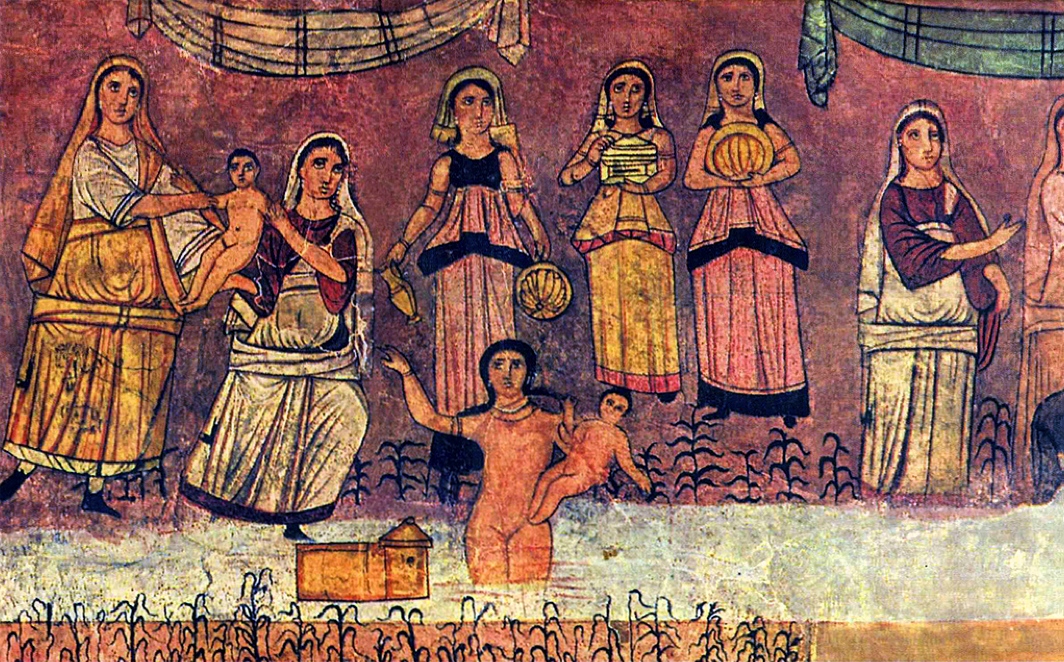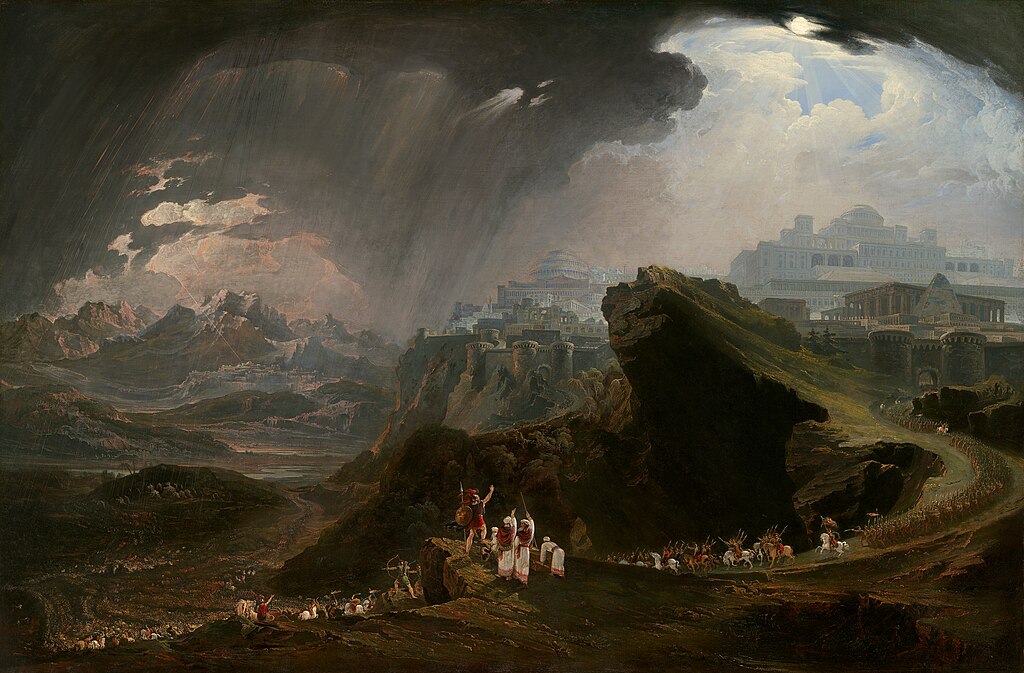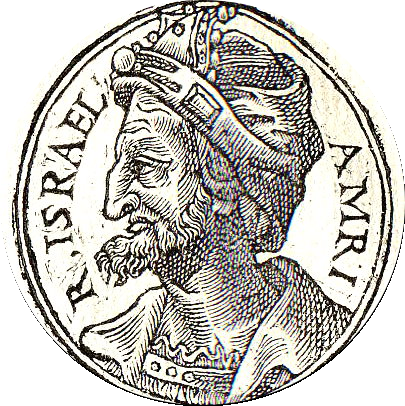On the historicity of central figures of the Tanakh
The Tanakh, or Hebrew Bible which contains the Torah, Nevi’im, and Ketuvim, contains narratives that have shaped religious, cultural, and historical perspectives for millennia. Central to these narratives are key figures who play significant roles in the origin and development of ancient Israel. While traditional views regard these figures as historical individuals, modern biblical scholarship and archaeology have cast doubt on their historicity. In post, we examine the available evidence and scholarly debates surrounding the historicity of some of the most prominent figures in the Tanakh, including Moses, Abraham, Joshua, David, Solomon, and Job, emphasizing current scientific perspectives.

Moses, with horns, by Michelangelo, 1513–1515, San Pietro in Vincoli, Rome. The horns are the result of a historical mistranslation of the Hebrew word for “radiant” in the Vulgate, the Latin translation of the Bible. Source: Wikimedia Commonsꜛ (license: CC BY-SA 2.0)
Moses: Prophet or myth?
The story of Moses is central to the Tanakh, particularly in the books of Exodus, Leviticus, Numbers, and Deuteronomy. According to the biblical account, Moses leads the Israelites out of Egypt in an event known as the Exodus, receives the Ten Commandments on Mount Sinai, and guides the people through the wilderness for forty years.


Left: Moses and the burning bush. Painting from Dura-Europos synagogue, third century CE. Source: Wikimedia Commonsꜛ (license: public domain) – Right: Finding of Moses, wall painting from the synagogue of Dura-Europos. Source: Wikimedia Commonsꜛ (license: public domain)
Evidence and scholarly perspectives
Despite the importance of Moses in the biblical tradition, there is no direct archaeological evidence confirming his existence or the events of the Exodus. Egyptian records from the New Kingdom period, during which the Exodus is traditionally placed, do not mention a large-scale departure of slaves or significant disruptions caused by an Israelite migration. Scholars point out that many of the details in the Exodus narrative, such as the plagues and the parting of the Red Sea, bear similarities to earlier Mesopotamian and Egyptian myths, suggesting a mythological rather than historical origin.
Several theories have been proposed to explain the lack of evidence. Some scholars, such as William Dever, argue that the Exodus story may be a collective memory of smaller groups of Semitic people migrating out of Egypt over time, later combined into a single national epic. Others, including Israel Finkelstein and Neil Asher Silberman, emphasize that the Exodus narrative likely reflects theological concerns of the Iron Age, during which the texts were written, rather than Bronze Age history.
Conclusion on Moses
The figure of Moses is best understood as a composite character embodying various ancient traditions and theological ideas. While Moses may represent real historical figures or events in a symbolic form, there is insufficient evidence to confirm his historicity as described in the Tanakh.
Abraham: Patriarch of a nation
Abraham is portrayed as the founding patriarch of Israel, with a covenant relationship with God that establishes the Israelites as a chosen people. His story, found in Genesis, describes his migration from Ur to Canaan, his trials, and his role as the ancestor of the twelve tribes of Israel.


Left: The bosom of Abraham, depiction from the Hortus Deliciarum of Herrad von Landsberg, 12th century. Source: Wikimedia Commonsꜛ (license: public domain) – Right: Narrated most important stations of Abraham, drawn on a map from the 9th century BCE. Source: Wikimedia Commonsꜛ (license: CC BY-SA 3.0)
Evidence and scholarly perspectives
The lack of archaeological evidence for Abraham is a significant challenge to his historicity. Archaeological findings in Mesopotamia and Canaan during the early second millennium BCE—the period traditionally associated with Abraham—do not align with the biblical narrative. Ur, the city from which Abraham purportedly originated, was a significant Sumerian city, but no historical records mention a migration resembling Abraham’s journey.
Many scholars, such as Thomas L. Thompson, view the patriarchal narratives as literary constructs designed to provide a common ancestry for the Israelite tribes. These stories, they argue, were likely composed during the first millennium BCE, long after the events they describe. The narratives reflect Iron Age societal concerns, such as land ownership and tribal identity, rather than historical memories of a distant past.
Conclusion on Abraham
Abraham’s historicity is widely questioned, with most scholars regarding him as a legendary figure created to provide a theological foundation for the Israelite people. While the narratives may preserve faint echoes of ancient traditions, they are unlikely to reflect actual historical events.
Joshua: Conqueror of Canaan?
The Book of Joshua describes the conquest of Canaan by the Israelites under Joshua’s leadership. According to the biblical account, Joshua leads a successful military campaign, capturing cities such as Jericho and Ai and dividing the land among the Israelite tribes.


Left: Joshua and the Israelite people, Carolingian miniature, c. 840 CE. Source: Wikimedia Commonsꜛ (license: public domain) – Right: Joshua Commanding the Sun to Stand Still upon Gibeon, John Martin, 1816. Source: Wikimedia Commonsꜛ (license: public domain)
Evidence and scholarly perspectives
Archaeological evidence does not support the biblical account of a widespread and rapid conquest of Canaan. Excavations at sites mentioned in Joshua, such as Jericho and Ai, reveal no signs of destruction consistent with the biblical timeline. Jericho, in particular, was uninhabited during the Late Bronze Age when the conquest is said to have occurred.
Scholars propose several alternative models for Israelite settlement in Canaan. The “peaceful infiltration” model suggests that the Israelites were originally nomadic groups who gradually settled in Canaan without significant military conflict. Another model, the “peasant revolt” theory, argues that the Israelites emerged from within Canaanite society as a socio-political movement of discontented peasants.
Conclusion on Joshua
Joshua, like Moses and Abraham, is considered by most scholars to be a legendary figure. The conquest narrative reflects theological concerns about Israel’s relationship with its land and God rather than historical events.
David and Solomon: Kings or mythologized leaders?
David and Solomon are central figures in the narrative of the united monarchy, ruling over a unified Israelite kingdom. David is depicted as a warrior king who establishes Jerusalem as his capital, while Solomon is portrayed as a wise and prosperous king who builds the Temple.


Left: Miniature of King David from the Egbert Psalter, 10th century. Source: Wikimedia Commonsꜛ (license: public domain) – Right: King Solomon, by Simeon Solomon, 1872. Source: Wikimedia Commonsꜛ (license: CC BY-SA 1.0)
Evidence and scholarly perspectives
The Tel Dan Stele, discovered in the 1990s, contains an inscription referring to the “House of David,” providing indirect evidence that David may have been a historical figure. However, the biblical depiction of David as the ruler of a large and powerful kingdom is not supported by archaeological evidence. Excavations in Jerusalem and other sites show no signs of a major political center or extensive building activity during the period traditionally associated with David and Solomon.
Solomon’s historicity is even more contested. The grand descriptions of his wealth and the construction of the Temple and palace are not corroborated by archaeological findings. Scholars such as Israel Finkelstein argue that the biblical accounts of David and Solomon were written during the later period of the divided monarchy and reflect an idealized memory of a past “golden age” rather than actual history.
Conclusion on David and Solomon
While David may have been a historical figure, he was likely a local chieftain rather than the ruler of a large empire. Solomon’s historicity is more doubtful, with many scholars viewing him as a legendary figure created to enhance the prestige of the Davidic dynasty.
Job: Wisdom literature or real individual?
The Book of Job presents the story of a righteous man who suffers immense trials and questions the nature of God’s justice. Unlike the other figures discussed, Job’s narrative is not set in a specific historical context but is framed as a theological exploration of suffering and divine justice.
 Scenes from the Life of Job in a tryptich by the Master of the Legend of St. Catherine and Master of the Legend of St. Barbara, both active in Brussels, c. 1466 - 1500, oak, Walraf-Richartz-Museum, Cologne. The detail shows several scenes, in which Job is tormented by the Devil.
Scenes from the Life of Job in a tryptich by the Master of the Legend of St. Catherine and Master of the Legend of St. Barbara, both active in Brussels, c. 1466 - 1500, oak, Walraf-Richartz-Museum, Cologne. The detail shows several scenes, in which Job is tormented by the Devil.
Evidence and scholarly perspectives
Job is widely regarded as a literary figure rather than a historical individual. The structure and style of the Book of Job resemble ancient Near Eastern wisdom literature, such as the Babylonian “Dialogue of Pessimism.” The narrative’s focus on philosophical and theological issues rather than historical events further supports its literary nature.
Conclusion on Job
Job is best understood as a literary creation designed to explore complex theological questions. While he may represent an archetypal figure of the suffering righteous man, there is no evidence to suggest he was a historical person.
Which figures are historical?
While many central figures in the Tanakh are regarded as legendary or mythological, some characters are widely accepted by scholars as historical figures based on archaeological evidence and external sources. One notable example is King Hezekiah, who ruled Judah during the late 8th century BCE. Archaeological findings, including the Siloam Tunnel inscription and Assyrian records, corroborate biblical accounts of his reign and his preparations for the Assyrian siege of Jerusalem.
Another significant figure is King Josiah, known for his religious reforms and centralization of worship in Jerusalem. Josiah’s historical existence is supported by biblical texts and the broader historical context of the late 7th century BCE, during which major geopolitical changes occurred in the Near East.


Left: Josiah in a painting by unknown artist in the choir of St. Mary’s Church, Åhus, 17th century. Source: Wikimedia Commonsꜛ (license: public domain) – Right: Portrait from Promptuarium Iconum Insigniorum, Guillaume Rouillé, 1553. Source: Wikimedia Commonsꜛ (license: public domain)
Figures such as Omri, the king of Israel, and his son Ahab also find confirmation in external sources, including the Mesha Stele and Assyrian inscriptions. These sources describe events consistent with the biblical narrative, providing independent attestation to their rule.
Conclusion
The historicity of central figures in the Tanakh remains a subject of significant scholarly debate. While these figures are integral to religious narratives, archaeological and textual evidence often fails to confirm their existence as described. Many scholars contend that these stories were shaped by later theological and ideological concerns, reflecting the sociopolitical contexts in which they were written. Though some characters may have historical analogs, most are considered products of editorial processes and myth-making traditions typical of the ancient Near East.
References and further reading
- Thompson, Thomas L., The historicity of the patriarchal narratives: the quest for the historical Abraham, 2002, BLOOMSBURY 3PL, ISBN: 978-1563383892
- Finkelstein, I., & Silberman, N. A., The Bible Unearthed: Archaeology’s New Vision of Ancient Israel and the Origin of Its Sacred Texts, 2002, Free Press, ISBN: 978-0684869131
- William G. Dever, Who were the early Israelites and where did they come from?, 2006, Wm. B. Eerdmans Publishing, ISBN: 9780802844163



































comments